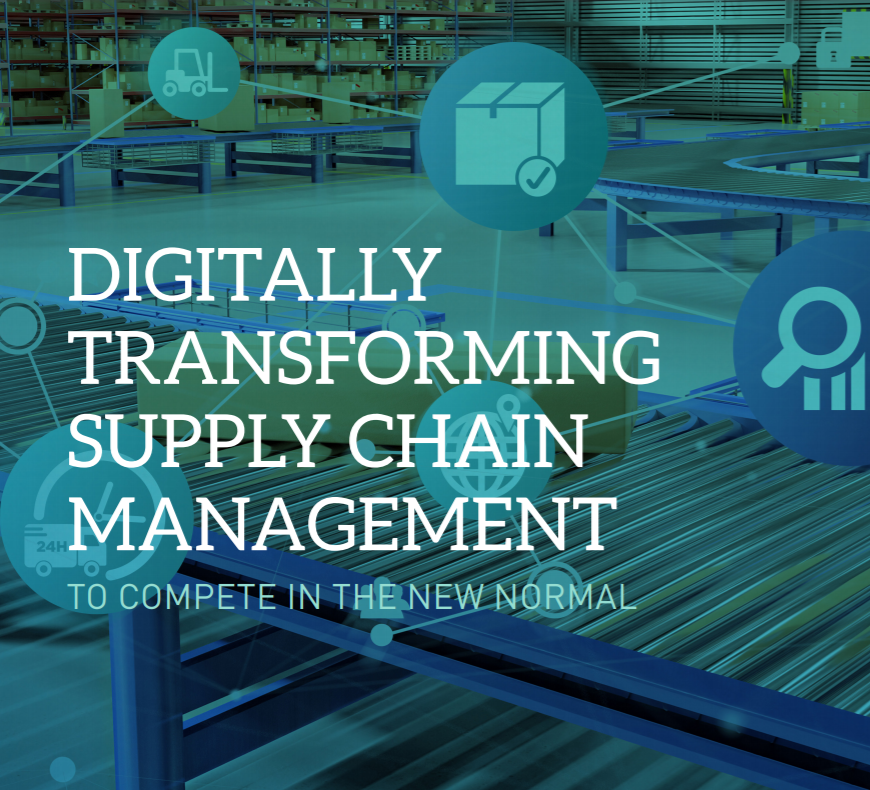The distribution value chain has faced numerous disruptions over the years. A business’s ability to respond to these disruptions determines its success. However, simply responding to each change through minor business adjustments is no longer feasible. Instead, distributors must first understand the underlying disruptions in the industry, then learn new strategies to become influential players.
What are some disruptions distributors currently face?
1. Increasing digitization
Innovative technologies allow distributors to enhance their strategic decision making and value creation. Digitization increases productivity levels, profits, growth and sustainability. However, digitization also asks businesses to rethink how they interact with customers and how to best meet their demands and expectations.
With big data and cloud ERP technologies, analytics must be leveraged to bring unique insights for making more informed critical business decisions. The key takeaway for distributors is to find opportunities to incorporate digital into their business model, such as digitizing transactions and interactions by integrating an ERP system. Furthermore, e-commerce adoption can give rise to a more omnichannel approach to catering to customers. Through e-commerce integration, customers can experience seamless interaction across several sales channels. In fact, B2B e-commerce projected growth of 19% is faster than growth in the B2C market, according to a Deloitte research project.
Advancements in technology have allowed for improved processes as well. An interesting example is a virtual stockroom for inventory. Through Internet of Things (IoT) technology, remote inventory sensing can be used in real-time to track and record lists and contribute to a faster fulfillment time of customer orders.
Guide: Digitization in Supply Chain Management
2. Changing customer expectations
Traditionally, B2B customers are on the opposite side of the spectrum compared to B2C customers. Regarding pricing, B2B customers seek complex terms and negotiations, whereas B2C customers need a transparent standard price. B2B customers are relationship-focused, whereas B2C customers have their eyes on the products. Buying habits also vary; B2B customers appear more rational, whereas B2C customers make emotional purchases.
Distributors historically focus on B2B practices, but expectations are changing in 2022. In B2B e-commerce, buyers want to see and compare your prices with competitors to make the most informed decisions. Buyers use analytical tools to break down specific costs that come with the product to ensure the most effective choice. B2B customers are highly informed; a 3:1 ratio shows that B2B customers would rather self-educate themselves about products than talk to a sales representative. A study showed that 59% of B2B customers prefer not to consult with a sales representative.1 Buyers wish to engage consistently across multiple sales channels. Platforms must be of high quality, easy to use, and interconnected for a seamless experience.
Leveraging B2C marketing through social media platforms such as YouTube and Instagram have also proven to be a great way to connect with customers. They can lead to higher ratings and reviews and, therefore, more customers and loyalty in the long run.
3. Disintermediation
The threat of disintermediation is not a shock to distributors. However, with 64% of industrial buyers buying directly from manufacturers, there is undoubtedly pressure on distributors.2 For example, electrical supplies manufacturers utilize drop-shipping direct to the customer. In the liquor and wine supply chain, retailers such as Costco have convinced the state of Washington to allow direct purchases from manufacturers.
If distributors continue with the same B2B approach, they may lose out on ways to foster customer loyalty and achieve incremental revenue growth. Distributors must capitalize on these disruptions’ opportunities to add value to their company.
How can distributors respond to these disruptions and thrive?
Customer-centric approach
Customer engagements, including face-to-face interactions, can elevate buyers’ experiences. This approach delivers a superior engagement and can transform the wholesale value proposition. As B2B customers are increasingly becoming more proactive at researching products and comparing prices before approaching the distributor, distributors need to find ways to engage the customer. A study showed that 75% of B2B customers prefer buying online.3 What’s the key takeaway? Customers are changing, and distributors must adapt to that. To develop a mobile, customer-centric strategy, an omni-channel approach may be used. This will better align interactions, sales channels and address main customer pain points.
Have the right tools
Adding new services alongside the business’ core services may add more customer value. However, if the firm is expanding too fast, it may not have the resources or strategies to handle rebates. The business must have the right back-end office strategy. Investing in a good ERP solution to manage day-to-day processes, inventory, and shipments is a wise choice.
Leverage analytics
With increasing digitization, distributors must leverage data analytics to analyze current and future states to support decision-making. Investing in advanced analytics and machine learning can yield valuable insights, helping distributors better understand customers buying criteria and willingness to pay. While analytics is a powerful tool, it is vital to introduce this gradually among internal team members. Technology adoption may cause a backlash, so using case examples and training can help build trust and credibility.
Identifying the disruptions standing in the way and adaptability are key in overcoming the challenges today’s distributors face. Not sure where to start or need help selecting the right digitization tools? Contact us for a complimentary consultation today.
Author: Mars Lomtakul
1 A. Hoar, “Threats to Traditional Sales Will Change the Focus for B2B Marketers,” UPS Industrial Buying Dynamics Study, May 11, 2015
2 UPS, “Industrial Buying Dynamics Study,” June 2015, p. 8.
3 A. Hoar, “Threats to Traditional Sales Will Change the Focus for B2B Marketers,” UPS Industrial Buying Dynamics Study, May 11, 2015
Contact Us
For more information on this topic, please contact a member of Withum’s Digital and Technology Transformation Services Team.




